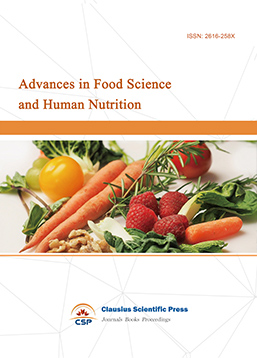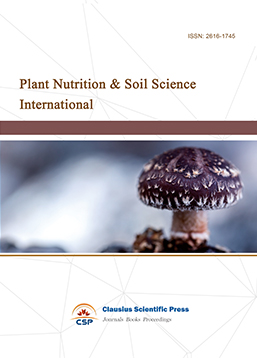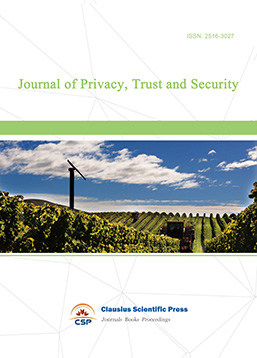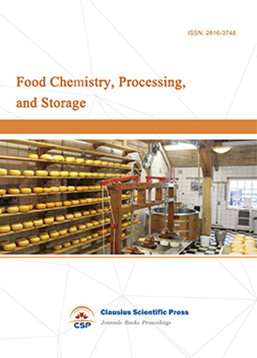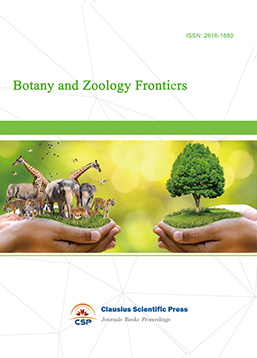Effects of Different Air Volume Supply Controlled by Circulating Fan on Tobacco Curing Characteristics
DOI: 10.23977/jmcs.2023.020103 | Downloads: 16 | Views: 1338
Author(s)
Guangting Yin 1, Wenyuan Li 1, Qingkai Nie 1, Jianan Wang 2, Lei Wang 1, Jia He 1, Dejian Wan 1, Weidong Duan 1
Affiliation(s)
1 China Tobacco Henan Industrial Co., Ltd., Zhengzhou, 450000, China
2 Henan Agricultural University, Zhengzhou, 450000, China
Corresponding Author
Weidong DuanABSTRACT
The air supply volume of the circulating fan directly affects the wind speed between leaves in the bulk curing barn. To find out the effect of different ventilation rates on the degradation and water loss characteristics of tobacco during the curing process, the national standard bulk curing barn simulation oven was used to set different frequencies with 5 gears on the circulating fan to control the rotation speed during the yellowing stage and the leaf drying stage of the different tobacco curing phases for testing. The results showed that with the change of the air supply volume of the circulating fan from low to high, the statistical analysis had a significant impact on the pigment degradation in the yellowing stage, the starch degradation in the yellowing stage and the leaf-drying stage, and the moisture removal of the leaves. The characteristic parameters of the impact related to the rate, process, and the residual amount of the leaves, and the extent of the impact was shown as leaf dehydration>starch degradation>pigment degradation. The results can be used as a reference for the reasonable regulation of the wind speed between leaves in the bulk curing barn according to the needs of the curing technology during tobacco curing process.
KEYWORDS
Bulk curing barn, circulating fan, variable-frequency drive, starch degradation, water loss characteristicCITE THIS PAPER
Guangting Yin, Wenyuan Li, Qingkai Nie, Jianan Wang, Lei Wang, Jia He, Dejian Wan, Weidong Duan, Effects of Different Air Volume Supply Controlled by Circulating Fan on Tobacco Curing Characteristics. Journal of Modern Crop Science (2023) Vol. 2: 19-26. DOI: http://dx.doi.org/10.23977/jmcs.2023.020103.
REFERENCES
[1] Yang S.X., Wang X.Q., Li L., Shi Q.L. and Meng G. (2019) Frequency conversion technology and its application trend in tobacco curing. Crop Research, 33(2), 136-139, 150.
[2] Bing H., Jian L. and Jiang H.D. (2014) On lean management in tobacco leaf production. Acta Tabacaria Sinica, 20(01), 1-8.
[3] Zhang J.L., Sun C.L., Wei J.Y., Jin Y.B., Jia H.J., Dai L.J., Rang Z.W., Xu Y.Q. and Huang C.J. (2023) Baking performance and benefit analysis of flue-cured tobacco in frequency conversion heat pump dense barn. Crop Research, 37(1):49-54, 61.
[4] Liu C., Chen Z.G., Zhao H.W., Zhang H.L., Li J.P. and Gong C.R. (2010) Effect of fan speed changes on neutral aroma components of cured tobacco during bulk curing. Journal of Hunan Agricultural University (Natural Sciences), 36(06), 640-643.
[5] Li X.H., Qiu M.W. and Wen J. (2012) Effects of frequency motor of bulk curing on tobacco leaf quality. Chinese Tobacco Science, 33(01), 74-77.
[6] Zhan J., Zhou F.F., Zhu H.B., Dong S.F., Rao Z., Wang Z.S. and Zhang X.L. (2016) Effects of frequency control of four-layers bulk curing barn on aroma quality of upper leaves of cured tobacco. Journal of Gansu Agricultura University, 51(04), 43-51.
[7] Li Y.L., Liu M.H., Liu J.W., Gou J.Y., Zhang W.J., Wang T.X. and Lu X.C. (2021) Optimization of tobacco of variable frequency bulk curing frocess by response surface analysis. Acta Tabacaria Sinica, 27(1), 83-89.
[8] He Y.H., He F., Yang R.S., Sun J.F., Zhang Y.G. and Gong C.R. (2011) Effect of frequency conversion technology of circulating ventilator in bulk curing process on tobacco quality. Acta Agriculturae Boreali-occidentalis Sinica, 20(04), 76-81.
[9] Zhou X.F., Wei J.Y. and Gu M.H. (2015) Effects of frequency motor of bulk curing barn on aroma constituents of cured tobacco. Journal of Guangxi Agriculture, 30(06), 29-33.
[10] Xu Q., Liu Q., Xu G.L. and Zhang J. (2013) Influence of fan rev during late stage of intensive curing on the inner quality of tobacco leaves after curing. Hubei Agricultural Sciences, 52(02), 349-351, 358.
[11] Sun S.B., Li Y.L., Wang B.X., Shi G., Wu W.Q., Wang J., Yang X.L. and Wu D. (2021) Relationship between ecological factors, pigment and starch in cured tobacco during maturity. Acta Agriculturae Jiangxi, 33(07), 81-86.
[12] Duan S.J., Wang P., Zeng Y., Peng Y.H., Jia S.W., Zhang H.Y., Song C.P. and Chen X.L. (2022) Variations of resistant starch contents in tobacco leaves during growth and curing. Tobacco Science & Technology, 56(2), 34-40.
[13] Chen J., Li Y., He X., Jiao F.C., Xu M.L., Hu B.B., Jin Y. and Zou C.M. (2021) Influences of different curing methods on chemical compositions in different types of tobacco. Industrial Crops and Products, 167, 1-11.
[14] Szedljak I., Szantai-Kohegyi K. and Kosary J. (2010) Study of tobacco plant as a possible nutritive protein source. Acta Alimentaria, 39(2), 149-156.
[15] Lourenco C.B., Ataide J.A., Cefali L.C., Novaes L.C.D.L., Moriel P., Silveira E., Tambourgi E.B. and Mazzola P.G. (2016) Evaluation of the enzymatic activity and stability of commercial bromelain incorporated in topical formulations. International Journal of Cosmetic Science, 38(5), 535-540.
[16] Kakie T. (1973) Degradation of starch granules of tobacco-leaves during flue-curing-(studies on saccharide metabolism of tobacco-leaves during curing.2. Journal of the Agricultural Chemical Society of Japan, 47(11), 667-672.
[17] Ma Y.N., Wang R.G., Wu C., Shi Y.W., Wang Z.H., Xie S.D., Zhou S.P., Xu H.M. and Ren X.L. (2012) Developmental analysis on genetic behavior of quality traits of cured tobacco (Nicotiana tabacum) in multiple environments. International Journal of Agriculture & Biology, 14(3), 652-660.
[18] Li J., Yang R., Jiang Y., Sun S., Li J., Gu H., Lin Y., Luo X., He C. and Chen Y. (2022) Comparative proteomic analysis by isobaric tags for the relative and absolute quantification reveals the responses of tobacco (Nicotiana tabacum L.) roots to different soil types. Frontiers in Plant Science, 13.
[19] Zhang P.Y., Wang J.G., Geng Y.P., Dai J.R., Zhong Y., Chen Z.Z., Zhu K., Wang X.Z. and Chen S.Y. (2015) MSAP-based analysis of DNA methylation diversity in tobacco exposed to different environments and at different development phases. Biochemical Systematics and Ecology, 62: 249-260.
[20] Kazakbaev V., Prakht V., Dmitrievskii V., Ibrahim M.N., Oshurbekov S., and Sarapulov S. (2019) Efficiency analysis of low electric power drives employing induction and synchronous reluctance motors in pump applications. Energies, 12(6), 1144.
| Downloads: | 689 |
|---|---|
| Visits: | 52423 |

 Download as PDF
Download as PDF